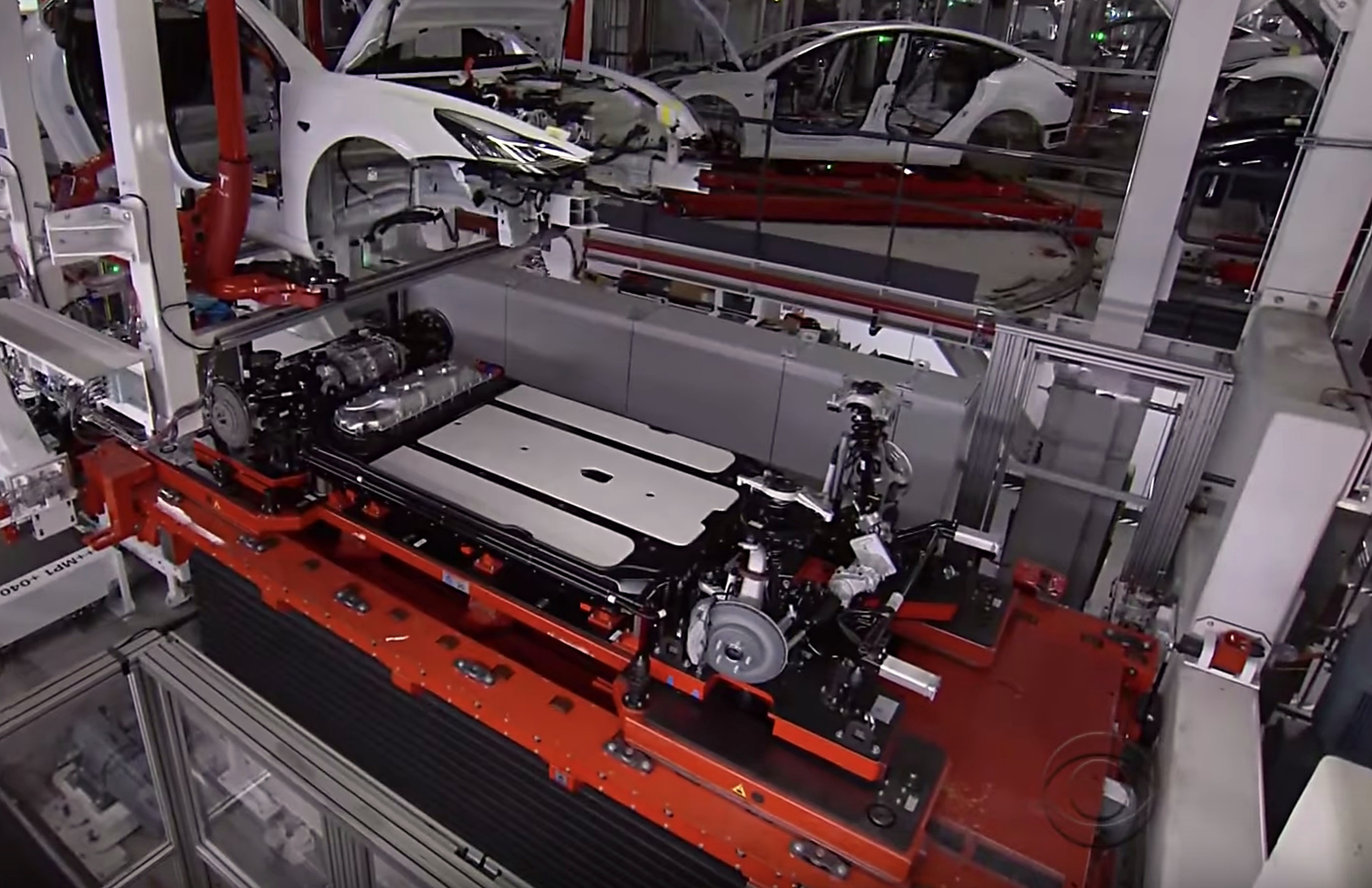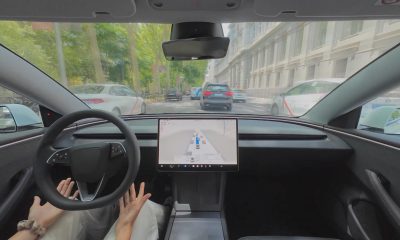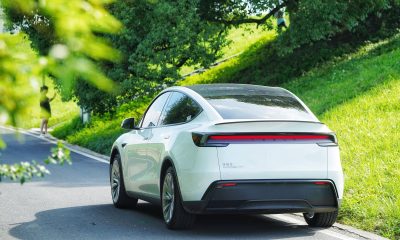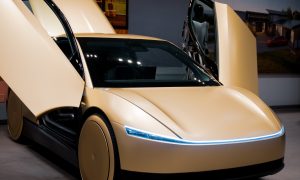

News
Tesla’s approach to battery technology keeps it ahead in the EV industry
Tesla’s dominance in the growing electric vehicle (EV) industry is largely attributed to its unique approach to its battery technology. The engineering behind the all-electric car maker’s cylindrical cells speaks for itself in terms of the performance and range achieved, but in a recent interview with a battery technology researcher, a few things detailed about Tesla’s batteries stood out in particular.
Ravindra Kempaiah is a Ph.D. scholar at the University of Illinois Chicago focusing on advanced battery materials for his thesis. In his interview with Tesla owner and host of All Things EV, Sean Mitchell, Kempaiah explained lithium-ion technology in EVs and the primary issues faced in their development. Overall, the biggest challenge is balancing the three main components in battery production: energy density, cost, and cycle life. Increasing one area will significantly impact the other, and the ideal equation is always being sought after. For example, if you increase energy density for higher range and lower cost, the cycle life takes a major hit. If you increase density and life cycle, the battery alone can cost as much as $100k, as described by Kempaiah.
“We always want more range. We always want higher cycle life. We want our batteries to last 15-20 years and the car to go 500 miles, but this is a problem every battery scientist has faced for the last 30 years,” Kempaiah commented in the interview.
Tesla deals with the same balancing act as other battery-electric car makers; however, there are key factors which seem to have kept the company ahead in the industry.

First, Tesla’s choice of cylindrical cells sets it apart from every other electric vehicle on the market. This provides several advantages that drive performance, flexibility, and cost control. Notably, Rivian is also using cylindrical cells, although their vehicles are not yet under production.
Out of the three types of cells available (cylindrical, prismatic, and pouch cells), cylindrical is the most cost-effective to produce. Namely, the cost per kWh is lower in cylindrical cells versus other types. The metallic jacket around the 18650 and 2170 cylindrical cells used in the Tesla Model S/X and Model 3, respectively, acts as scaffolding and provides structural rigidity to the battery. Additionally, in high powered situations, current draw and distribution of power is over the entirety of the battery pack instead of concentrated in a certain section, according to Kempaiah.
Second, Tesla uses a liquid-cooled thermal management system to manage battery temperatures whereas other automakers take a more economical air cooling approach. By adjusting the temperature of the battery pack, Tesla is able to ensure that cells are operating in their most efficient and optimal states, thereby maximizing battery longevity as well as performance. While reducing cost is an important factor in accelerating the growth of the electric vehicle market, Tesla’s investment in thermal management technology provides an upside for owners who may be looking for longevity and long-term affordability of their cars.

Third, Tesla has actively sought to limit the amount of cobalt it uses in its batteries and already uses less of the element than other companies in the Model 3 batteries. The scarcity of cobalt and its mining sources have subjected it to socioeconomic situations that are more than problematic in the United States, i.e., child labor and similar abuses are widespread in its sourcing. With this in mind, Tesla has been working on the question, “Is cobalt really needed?”
Cobalt is used as a cathode in battery technology, and out of all cathode materials available, it has the highest cost both fiscally and politically. Current consensus on battery technology says that without cobalt, the structural integrity and cycle life in batteries is compromised, as described in the interview. However, some recent scientific literature was cited by Kempaiah that indicated higher nickel content limited the impact of cobalt on batteries, possibly removing the need to use it at all. Nickel is more widely available across the globe, which keeps its cost down and mitigates the socioeconomic impacts often associated with resource mining operations. Overall, the discussion between Mitchell and Kempaiah indicated that Tesla can probably go cobalt-free soon, making it less vulnerable to the cobalt industry.
Finally, Tesla takes great care to educate its customers about proper battery maintenance, especially with regard to the negative impact of bad charging habits. Specifically, keeping an electric car battery charged at 100% for long periods degrades the battery very quickly, while keeping charging states within an optimal range will give it a long life. Tesla makes it a point to communicate to customers the importance of battery health on their overall ownership experience and value of their purchase.
When asked for his opinion by Mitchell, Kempaiah attributed the lack of education by other brands as a disconnect between engineering teams and marketing teams. While battery “best practices” are provided to EV customers by all manufacturers, the importance of communicating the true impact of bad charging habits may not be emphasized enough to be included as prominently as it should.
In summary, Tesla is constantly developing the technology in its vehicles, and its particular attention to its batteries looks to have given the company a significant advantage over its competitors. Perhaps other automakers will take a few tips from Tesla in the future, even if it’s as limited as improving communications with customers.
Watch Sean Mitchell’s full interview with Ravindra Kempaiah below:
Elon Musk
Why Tesla’s Q3 could be one of its biggest quarters in history
Tesla could stand to benefit from the removal of the $7,500 EV tax credit at the end of Q3.

Tesla has gotten off to a slow start in 2025, as the first half of the year has not been one to remember from a delivery perspective.
However, Q3 could end up being one of the best the company has had in history, with the United States potentially being a major contributor to what might reverse a slow start to the year.
Earlier today, the United States’ House of Representatives officially passed President Trump’s “Big Beautiful Bill,” after it made its way through the Senate earlier this week. The bill will head to President Trump, as he looks to sign it before his July 4 deadline.
The Bill will effectively bring closure to the $7,500 EV tax credit, which will end on September 30, 2025. This means, over the next three months in the United States, those who are looking to buy an EV will have their last chance to take advantage of the credit. EVs will then be, for most people, $7,500 more expensive, in essence.
The tax credit is available to any single filer who makes under $150,000 per year, $225,000 a year to a head of household, and $300,000 to couples filing jointly.
Ending the tax credit was expected with the Trump administration, as his policies have leaned significantly toward reliance on fossil fuels, ending what he calls an “EV mandate.” He has used this phrase several times in disagreements with Tesla CEO Elon Musk.
Nevertheless, those who have been on the fence about buying a Tesla, or any EV, for that matter, will have some decisions to make in the next three months. While all companies will stand to benefit from this time crunch, Tesla could be the true winner because of its sheer volume.
If things are done correctly, meaning if Tesla can also offer incentives like 0% APR, special pricing on leasing or financing, or other advantages (like free Red, White, and Blue for a short period of time in celebration of Independence Day), it could see some real volume in sales this quarter.
You can now buy a Tesla in Red, White, and Blue for free until July 14 https://t.co/iAwhaRFOH0
— TESLARATI (@Teslarati) July 3, 2025
Tesla is just a shade under 721,000 deliveries for the year, so it’s on pace for roughly 1.4 million for 2025. This would be a decrease from the 1.8 million cars it delivered in each of the last two years. Traditionally, the second half of the year has produced Tesla’s strongest quarters. Its top three quarters in terms of deliveries are Q4 2024 with 495,570 vehicles, Q4 2023 with 484,507 vehicles, and Q3 2024 with 462,890 vehicles.
Elon Musk
Tesla Full Self-Driving testing continues European expansion: here’s where
Tesla has launched Full Self-Driving testing in a fifth European country ahead of its launch.

Tesla Full Self-Driving is being tested in several countries across Europe as the company prepares to launch its driver assistance suite on the continent.
The company is still working through the regulatory hurdles with the European Union. They are plentiful and difficult to navigate, but Tesla is still making progress as its testing of FSD continues to expand.
Today, it officially began testing in a new country, as more regions open their doors to Tesla. Many owners and potential customers in Europe are awaiting its launch.
On Thursday, Tesla officially confirmed that Full Self-Driving testing is underway in Spain, as the company shared an extensive video of a trip through the streets of Madrid:
Como pez en el agua …
FSD Supervised testing in Madrid, Spain
Pending regulatory approval pic.twitter.com/txTgoWseuA
— Tesla Europe & Middle East (@teslaeurope) July 3, 2025
The launch of Full Self-Driving testing in Spain marks the fifth country in which Tesla has started assessing the suite’s performance in the European market.
Across the past several months, Tesla has been expanding the scope of countries where Full Self-Driving is being tested. It has already made it to Italy, France, the Netherlands, and Germany previously.
Tesla has already filed applications to have Full Self-Driving (Supervised) launched across the European Union, but CEO Elon Musk has indicated that this particular step has been the delay in the official launch of the suite thus far.
In mid-June, Musk revealed the frustrations Tesla has felt during its efforts to launch its Full Self-Driving (Supervised) suite in Europe, stating that the holdup can be attributed to authorities in various countries, as well as the EU as a whole:
Tesla Full Self-Driving’s European launch frustrations revealed by Elon Musk
“Waiting for Dutch authorities and then the EU to approve. Very frustrating and hurts the safety of people in Europe, as driving with advanced Autopilot on results in four times fewer injuries! Please ask your governing authorities to accelerate making Tesla safer in Europe.”
Waiting for Dutch authorities and then the EU to approve.
Very frustrating and hurts the safety of people in Europe, as driving with advanced Autopilot on results in four times fewer injuries!
Please ask your governing authorities to accelerate making Tesla safer in Europe. https://t.co/QIYCXhhaQp
— Elon Musk (@elonmusk) June 11, 2025
Tesla said last year that it planned to launch Full Self-Driving in Europe in 2025.
Elon Musk
xAI’s Memphis data center receives air permit despite community criticism
xAI welcomed the development in a post on its official xAI Memphis account on X.

Elon Musk’s artificial intelligence startup xAI has secured an air permit from Memphis health officials for its data center project, despite critics’ opposition and pending legal action. The Shelby County Health Department approved the permit this week, allowing xAI to operate 15 mobile gas turbines at its facility.
Air permit granted
The air permit comes after months of protests from Memphis residents and environmental justice advocates, who alleged that xAI violated the Clean Air Act by operating gas turbines without prior approval, as per a report from WIRED.
The Southern Environmental Law Center (SELC) and the NAACP has claimed that xAI installed dozens of gas turbines at its new data campus without acquiring the mandatory Prevention of Significant Deterioration (PSD) permit required for large-scale emission sources.
Local officials previously stated the turbines were considered “temporary” and thus not subject to stricter permitting. xAI applied for an air permit in January 2025, and in June, Memphis Mayor Paul Young acknowledged that the company was operating 21 turbines. SELC, however, has claimed that aerial footage shows the number may be as high as 35.
Critics are not giving up
Civil rights groups have stated that they intend to move forward with legal action. “xAI’s decision to install and operate dozens of polluting gas turbines without any permits or public oversight is a clear violation of the Clean Air Act,” said Patrick Anderson, senior attorney at SELC.
“Over the last year, these turbines have pumped out pollution that threatens the health of Memphis families. This notice paves the way for a lawsuit that can hold xAI accountable for its unlawful refusal to get permits for its gas turbines,” he added.
Sharon Wilson, a certified optical gas imaging thermographer, also described the emissions cloud in Memphis as notable. “I expected to see the typical power plant type of pollution that I see. What I saw was way worse than what I expected,” she said.
-

 Elon Musk3 days ago
Elon Musk3 days agoTesla investors will be shocked by Jim Cramer’s latest assessment
-

 News1 week ago
News1 week agoTesla Robotaxi’s biggest challenge seems to be this one thing
-

 News2 weeks ago
News2 weeks agoTexas lawmakers urge Tesla to delay Austin robotaxi launch to September
-

 Elon Musk2 weeks ago
Elon Musk2 weeks agoFirst Look at Tesla’s Robotaxi App: features, design, and more
-

 Elon Musk2 weeks ago
Elon Musk2 weeks agoxAI’s Grok 3 partners with Oracle Cloud for corporate AI innovation
-

 News2 weeks ago
News2 weeks agoSpaceX and Elon Musk share insights on Starship Ship 36’s RUD
-

 News2 weeks ago
News2 weeks agoWatch Tesla’s first driverless public Robotaxi rides in Texas
-

 News2 weeks ago
News2 weeks agoTesla has started rolling out initial round of Robotaxi invites














